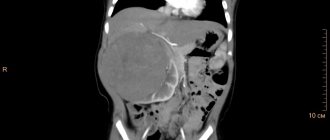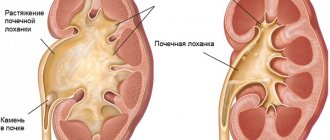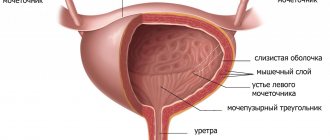What is kidney failure
With kidney failure, the cat feels depressed.
What is the functional activity of the kidneys in the body:
- purification of blood from waste, decay products, toxins;
- fluid retention or removal of excess fluid;
- participation in saturating the body with hormones, minerals, vitamins and enzymes;
- regulation of blood pressure by decreasing or increasing the amount of sodium produced.
With normal functioning of the kidneys, harmful substances that enter the body through food or drink or are produced by internal organs are removed from the body along with urine. If renal activity is impaired, any of the listed functions slow down or stop, resulting in intoxication of the body.
Cats by nature can tolerate discomfort for a long time, but this provokes serious complications. Therefore, you need to treat your pet with great attention. If any, even the most minor, signs of illness appear, you should immediately take him to the doctor. After all, the sooner you start treating kidney failure, the better the prognosis for recovery.
PN in cats is often accompanied by symptoms similar to other diseases: lethargy, depression, general weakness, vomiting, diarrhea. What should alert you: a small amount of urine, and sometimes the cessation of its excretion. The disease may be accompanied by rapid pulse, swelling on the body, pallor of the oral mucosa, the smell of urine or acetone from the mouth, low body temperature, and dehydration.
It cannot be said that these are characteristic features of renal failure; they are symptoms of other feline ailments. Only a veterinarian can make an accurate diagnosis based on the results of the examination. Under no circumstances should you give your pet any medications without consulting a specialist; this can cause irreparable harm to the animal.
Diagnostics
The kidneys are designed in such a way that only half of the nephrons are damaged in an animal showing signs of renal failure. Such a hidden course of the initial stages of renal pathology significantly complicates timely diagnosis. Signs that should alert the owner are the following:
- loss of appetite up to complete refusal of food;
- increased thirst (polydipsia);
- dehydration of the body;
- frequent urination;
- violation of the act of urination: uncharacteristic postures, meowing and screaming when visiting the toilet;
- the animal does not urinate in the tray;
- possible blood in the urine;
- lethargy, weakness, apathy, prolonged sleep;
- vomiting, diarrhea;
- presence of edema;
- ammonia odor from the mouth;
- stomatitis, gingivitis.
If a cat's kidneys fail, the symptoms may be supplemented by convulsions due to severe intoxication of the body, pain, paresis and paralysis of the hind limbs, and their swelling. Body temperature can either increase or decrease. This condition is life-threatening for the animal and requires immediate help.
For early diagnosis of renal failure, it is necessary to regularly donate the animal’s urine and blood for general and biochemical analysis.
In order to accurately diagnose kidney failure, ultrasound and x-ray examination methods are used. In some cases, a kidney biopsy is resorted to.
Causes of the disease
It is impossible to determine exactly what caused the disease.
There may be several reasons:
- Heredity. For example, polycystic disease is microscopic cysts (capsules with liquid) on the kidneys; kidney tissue is gradually replaced by foreign tissue. A greater tendency to the disease is observed in Persian cats or breeds close to them.
- Frequently occurring kidney inflammation.
- Past infectious disease.
- Any poisoning.
- Urolithiasis disease.
- Any injury.
- Undertreated acute failure.
There are many causes of kidney failure in cats.
Also at risk are cats with nephropathy, interstitial fibrosis, renal vascular pathology, amyloidosis, bleeding disorders, hypertension, peritonitis and other pathologies. Often, older cats, up to 8-10 years old, suffer from kidney failure. Kidney failure is largely due to the onset of the aging process.
In kittens or young cats, the cause of the disease may be heredity or genetic disorders. Often the owner himself is to blame : he can feed the pet with low-quality food, not pay due attention to filling the cup with water, not attach importance to any infection and carry out treatment at home without consulting a doctor.
Classification
Inflammatory kidney diseases are collectively called “Nephritis”. The following types of pathology are distinguished:
- Pyelonephritis. Purulent inflammation of the pelvis and parenchyma of bacterial etiology.
- Glomerulonephritis. Inflammation of the filtering glomeruli of non-infectious origin.
- Polycystic disease. A hereditary disease characterized by the formation of cavities in the parenchyma of an organ. Over time, the size of the cysts increases.
- Amyloidosis. A congenital pathology characterized by the deposition of protein in the tissues, the consistency of which resembles starch.
- Hydronephrosis. Characterized by urinary retention and dilation of the renal pelvis. Glandular tissue atrophies. Pathology can be hereditary or acquired.
- Nephrosclerosis. Replacement of parenchymal texture with connective tissue.
- Nephrotic syndrome. The ratio of protein fractions of blood plasma is disrupted.
- Chronic renal failure (CRF). Refusal of an authority to perform its functions.
All types of nephritis occur in manifest and permanent form, and also manifest themselves as exacerbations of the chronic process.
recommended articles:
- Nephritis in cats
- How to treat glomerulonephritis in cats?
When your kidneys hurt, your back is arched
Types and stages of renal failure
Often this disease appears as a result of previous problems with the urinary system, chronic somatic diseases, after injury or a serious infection. Kidney failure can be acute or chronic.
Acute renal failure (ARF)
Acute is called acute because it appears overnight and develops rapidly. But there is also a positive point: pronounced signs make it possible to quickly establish a diagnosis and begin treatment as soon as possible, which is a decisive factor in restoring the animal’s health.
This disease has three categories.
Acute renal failure develops very quickly.
The classification depends on the level at which the disturbance in the cat’s genitourinary system occurred:
- Prerenal (“prerenal”) - occurs when blood pressure drops sharply and intrarenal blood circulation is disrupted due to shock after bleeding, poisoning, infection, heat stroke, or as a result of dehydration in heart failure.
- Renal (“renal”) – occurs against the background of bacterial kidney infections, any inflammatory kidney disease and a system-wide infectious disease. One of the causes of renal failure may be damage to the tissue structures of the kidneys by various toxic substances, medications, snake venom, etc.
- Postrenal (“postrenal”) – occurs if there is a blockage or compression of the urinary tract. For example, a developing tumor can compress.
Typically, prerenal and postrenal forms of acute renal failure have a more favorable prognosis for recovery.
Why is an organ so important to an animal?
Representing a paired organ, the kidneys carry out the work of purifying the blood. Healthy organs contribute to the elimination of metabolic products and toxic substances formed in the body of carnivores. The kidneys are also involved in hematopoiesis. Therefore, nephrological diseases are accompanied by severe intoxication of the animal, disturbances in electrolyte, water and protein metabolism and are the cause of death in 20% of furry pets.
It is believed that domestic cats are susceptible to kidney pathology due to genetic predisposition. In addition, cats have a long but narrow urinary canal, which often contributes to blockage and inflammation. This especially affects cats, whose urinary system is even narrower than that of females.
Chronic renal failure (CRF)
Chronic renal failure is a kidney pathology, which, unlike acute renal failure, develops over a long period of time, when the kidneys gradually lose their excretory (excretory) function. At this time, the cells that form the structure of the kidneys begin to die, and new ones are not formed. The number of active cells is rapidly decreasing, which negatively affects the remaining ones, as the load on them increases. As a result, they also die off; if you look at the onset of the disease and do not start treatment in time, everything can end very sadly.
Chronic renal failure often occurs without any symptoms.
The danger of chronic renal failure in cats lies in the asymptomatic initial stage, but it is during this period that the pet can still be saved. Vivid signs of the disease appear much later, when the process becomes irreversible, since the kidneys are already more than two-thirds damaged. A scar appears at the site of the affected tissue, the kidney shrinks and stops working. Mostly, chronic renal failure affects adult animals on the threshold of old age.
Stages of chronic renal failure:
- Latent (hidden) . External symptoms have not yet appeared, but abnormalities in kidney function have already begun. The best time to start treatment, but usually the owner is not yet aware of the impending disaster, and treatment does not begin.
- Initial . May last for several months. Accompanied by slight malaise of the animal, decreased appetite, slight weight loss, and dull coat. A blood test done during this period will show negative deviations from the norm.
- Conservative . At this stage, there is a noticeable deterioration in the cat’s well-being, she weakens before her eyes, drinks a lot and greedily, defecates frequently and copiously, and experiences a constant urge to vomit. Based on the symptoms and as a result of the examination, diagnosing chronic renal failure is not difficult.
- Terminal . The most severe degree of the disease, there is an increasing deterioration in health. An ultrasound examination shows changes in the structure of the kidneys, their size is much smaller, and the blood has a high content of urea and creatinine. Continuing treatment at this stage is considered inappropriate, so as not to cause unnecessary suffering to the animal. As a rule, veterinarians advise euthanizing the cat.
The last stage of kidney failure cannot be treated.
Diagnostics
The kidneys are designed in such a way that only half of the nephrons are damaged in an animal showing signs of renal failure. Such a hidden course of the initial stages of renal pathology significantly complicates timely diagnosis. Signs that should alert the owner are the following:
- loss of appetite up to complete refusal of food;
- increased thirst (polydipsia);
- dehydration of the body;
- frequent urination;
- violation of the act of urination: uncharacteristic postures, meowing and screaming when visiting the toilet;
- the animal does not urinate in the tray;
- possible blood in the urine;
- lethargy, weakness, apathy, prolonged sleep;
- vomiting, diarrhea;
- presence of edema;
- ammonia odor from the mouth;
- stomatitis, gingivitis.
If a cat's kidneys fail, the symptoms may be supplemented by convulsions due to severe intoxication of the body, pain, paresis and paralysis of the hind limbs, and their swelling. Body temperature can either increase or decrease. This condition is life-threatening for the animal and requires immediate help.
For early diagnosis of renal failure, it is necessary to regularly donate the animal’s urine and blood for general and biochemical analysis.
Treatment of the disease
After the examination and diagnosis, treatment measures corresponding to a specific type of PN are prescribed. Acute insufficiency, as well as chronic, requires its own individual method of treatment.
Therapy for acute renal failure:
- cleanse the blood of toxins using medications;
- try to avoid anemia;
- stop vomiting, diarrhea;
- stabilize the pressure.
A competent veterinary clinic doctor will help resolve these issues. Only a veterinarian should prescribe the necessary medications, draw up a dosage schedule and calculate the dosage, taking into account the weight and age of the cat.
Treatment will be effective if it is started in a timely manner and the cause of the disease is eliminated. If identifying the causes of acute renal failure is difficult, there is a risk of relapse of the disease, which can make acute failure chronic.
Only a veterinarian can prescribe treatment for kidney failure.
Therapy for chronic renal failure
Chronic renal failure requires lifelong therapy, since, unfortunately, it is impossible to completely get rid of chronic renal failure, but you can slow down its development, thereby extending the life of your pet and easing suffering. The most important thing is to constantly monitor how the cat is feeling and carry out supportive measures, which are carried out only by a qualified veterinarian.
How long do cats live - table of average life expectancy of different breeds
Today we will talk about animals, or more precisely, about cats and their life expectancy under various circumstances. Every owner strives to ensure that his beloved pet lives as long and as well as possible.
Today, the life expectancy of cats has almost doubled compared to previous decades.
How long do domestic cats live? What measures should be taken to make your pet a long-liver? Let's take it in order!
What factors influence the lifespan of domestic cats?
Some owners cannot be happier that their pet lives a long and happy life. For others, pets do not live to a ripe old age. What is the reason for this difference? A number of factors can greatly undermine the health of your beloved pet. It is important for the owner to know about them in order to prevent their occurrence.
- Genetic predisposition
. Every cat breed is susceptible to some disease to one degree or another. For example, Persian cats are susceptible to kidney disease, which sooner or later leads to kidney failure. Therefore, Persian cats live on average about 10 years. - Habitat
. It's no secret that indoor cats have a better life than outdoor cats. Pets are surrounded by care and love, protected from viral and bacterial attacks, infections and other misfortunes that await a pet on the street. - Nutritional Features
. How long British cats and other breeds live depends on their diet and balance. A lack of vitamins and minerals can cause damage to health, sometimes irreparable. You should consult your veterinarian when choosing food. However, there are doctors who can recommend dry and wet commercial food; There are experts who are categorically against such a diet. They stand for natural food. - Sterilization
. Few people know how long unsterilized pets and cats live after sterilization. Again the camp was divided into two fronts. The first doctors believe that sterilization prolongs the life of the animal due to the fact that the pet will not be susceptible to diseases of the genital area. Sterilized cats live several years longer than their counterparts. On average, sterilized individuals live about 15-20 years. Cats that give birth regularly shorten their lives. Other doctors believe that sterilization leads to lethargy and inactivity of the animal. This, in turn, leads to diabetes, obesity and shortened life. - Predisposition to chronic diseases
. If a pet has a chronic disease or a disease that is inherited, then it is unlikely to live to a ripe old age. So, a cat with diabetes lives only 4 years. An animal with urolithiasis can live only 5 years. - Stress
. Do you know how many years do pet cats live in a family where an optimal psychological climate is maintained? Add a couple of years to the average. Such pets are real long-livers.
Average life expectancy table for cats
Animals for whom the street is their father's home will live at most 5-6 years. Survival without water or food affects how long outdoor cats live. The body of such a cat literally fights for every opportunity to survive.
But how long domestic cats of common breeds live is shown in the table. The average lifespan of any domestic cat is approximately 12-17 years. But there are cases when representatives of the cat family crossed the threshold of 20 years.
| Breed | average life expectancy | Some aspects |
| Russian blue cats | 15 years | The way representatives of this breed are kept affects how long Russian Blue cats live at home. With a competent approach, life expectancy increases to 18-19 years. Starting from the age of 8, the owner must annually take a cat of the specified breed to the veterinarian for examination. |
| Scottish fold cats | 20 years | Few people knew how long the beloved Scottish Fold cats live. It turns out that this breed is a real long-livers. They have enviable immunity, which is why Scottish cats live so long. However, such pets have problems with the spine and ears, so it is important to regularly examine your pet. These diseases are not fatal, but can slightly shorten the pet’s lifespan. A balanced diet and a healthy lifestyle determine how long Scottish Fold cats live. |
| Bengal cats | 15-16 years old |
Bengal cats live beyond the specified period and make the life of their owners fun and joyful. |
| Abyssinian breed | 15-17 years old | With high-quality care and an optimal psychological climate, Abyssinian cats can live up to 20 years. Although pets have a predisposition to diseases of the kidneys, retina, and blood. In order for your pet to live longer than the specified period, you need to monitor the health of its teeth (Abyssins often suffer from gingivitis). |
| British breed | 12-15 years | Representatives of this breed have well-developed muscles, strong immunity and lead an active lifestyle, so it is reliably known how many years British cats live. Individuals of this breed practically do not suffer from cancer. There are some British pets who have reached the age of 20. |
| Persians | 15-20 years | It turns out that Persian cats with short noses live longer than their extreme counterparts. Thus, short-nosed Persians can reach 20 years of age, while Persian cats (extreme and classic Persians) live only 15 years. |
| Siamese | 15-20 years | Siamese cats often live for over 20 years. It is necessary to take into account the fact that purebred individuals are more susceptible to various diseases than mestizos. Siamese suffer from glaucoma, strabismus, chronic renal failure, and difficulty breathing. Of course, with decent care and a balanced diet, a Siamese cat will live a very long time. |
| Siberian breed | 13-17 years old | There are cases where Siberian cats live and cross the 25-year mark of their lives. This breed is considered the healthiest. The main thing is to approach the pet correctly. |
| Sphinxes |
| Not everyone knows how long sphinxes live: hairless cats can delight their owners for 20 years. There is a single case known when a sphinx lived for 31 years. But this is more an exception than a generally accepted fact. Pets of this breed can boast of excellent immunity even in advanced years. |
How long do cats live on average without food?
Every creature on Earth needs food and water. These are the fundamental factors of life on the planet. Lack or lack of food and water can cause irreparable harm to the body. If a cat goes without food for several days, how long will it live? Therefore, it is vital for every owner to know the daily intake of water and food for their pet.
How long can a cat live with water but no food? If we consider this situation, then about 10 days. If the pet has to do without food and liquid, then its life expectancy is reduced to 5-6 days. It all depends on the age, gender, and breed of the pet.
If a pet is undergoing treatment and refuses food, then a hunger strike of 5 days is considered the norm. Then the cat’s body will begin to waste energy on the normal operation of all systems. A hunger strike for more than 5 days can lead to dire consequences.
How long does a cat live on average without water?
The health and life of a pet in absence depend on several factors:
- The colder it is outside, the more likely your pet is to survive until moisture appears. If an animal is left without water in a hot summer, its body will be dried out literally within a day.
- Diet. If a cat eats only dry food, then its moisture reserves must be replenished regularly. If there is a lack of water with such a diet, the body will not last long. If the animal eats wet food, then the water should last for a long time. However, if the owner is leaving for a long time, he should ask friends to come to the pet and feed and water it at least once a day.
- It is believed that British Fold cats do not drink water due to the nature of the breed. However, some British owners note that their pets drink water like other animals.
- The older the pet, the more water it needs every day. A cat can drink about 250 ml of water per day. How long will cats last at home in the absence of moisture? Without serious health consequences – about 2 days. Then comes severe exhaustion and disruption in all body systems. In total, the animal can live without fluid for about 5 days. Sometimes death occurs earlier.
Cat nutrition during PN
Treatment of PN at any stage involves following a diet, taking medications, walking, etc. Nutrition plays a big role not only in the treatment, but also in the prevention of this unpleasant disease.
You must adhere to a certain diet. What to feed a cat with this diagnosis? All owners of sick pets face a similar question. If before the illness the cat was fed natural food, and she liked this food, now many foods need to be excluded from the diet, making the food dietary. It is unlikely that such a replacement will be to the taste of the animal.
What should not be in the diet of a sick cat:
- animal fats;
- any dairy products;
- liver;
- fish oil;
- sea fish;
- fish caviar.
Foods high in phosphorus and protein should be avoided. Very little white chicken meat is allowed. You should completely exclude carbohydrates; they are found in large quantities in cereals, pasta and flour products.
Prevention
Compliance with preventive measures will help minimize the risk of developing the disease or prevent it at an early stage:
- Don't let infectious diseases take their course. Be sure to seek help from specialists and complete treatment.
- Monitor the weight of the animal, preventing it from growing excessively.
- Use only high-quality feed and ensure adequate water intake.
- Try to minimize stressful and traumatic situations.
- Monitor the functionality of the urinary system with periodic examinations. This is especially true for cats with a genetic predisposition.
Diagnosis methods
When diagnosing all kidney diseases, a blood test is of no small importance. The kidneys, as the central element of the urinary system, are responsible for regulating the level of electrolytes in the blood, and also remove many toxic compounds into the external environment. If something is wrong with the kidneys, the content of various substances (both normal and not so normal) quickly increases in the blood and its plasma. Let's look at some of them.
Firstly, phosphorus and calcium . Normal levels of these elements in the blood are maintained due to the interaction of three hormones and the kidneys, which remove their excesses into the external environment. So when they become ill, the amount of “minerals” in the blood increases. But it is worth remembering that many thyroid pathologies can lead to a similar effect. Despite all of the above, the “classic” sign of kidney damage is an increase in the amount of various nitrogenous compounds in the blood.
They are “waste” from the digestion and breakdown of protein feeds, and normally this “garbage” is removed from the body by the kidneys. The worse the condition of the latter, the higher the content of nitrogenous bases. When their maximum permissible level increases, these compounds begin to have a pronounced toxic effect, which is expressed in the appearance of signs of intoxication.
Nitrogenous bases
Azotemia is the medical term used to refer to increased levels of nitrogenous bases and creatinine in the blood. “Uremia” is the same thing, but in the aspect of the development of intoxication phenomena and other signs of deterioration in the dog’s health, characteristic of all kidney diseases.
These include: anemia, polydipsia, polyuria, vomiting and progressive weight loss.
Azotemia is divided into three large types (depending on the location of the causes that caused it):
- Prerenal.
- Renal.
- Postrenal.
Prerenal azotemia is most often a consequence of pathologies that impair blood flow to the kidneys. These may include dehydration, Addison's disease or heart disease. Renal azotemia is just “our” case, since it occurs as a result of damage to the kidney tissue itself. Postrenal azotemia is a consequence of an increase in urine pressure in the urinary system due to obstruction of the latter. A common cause is urolithiasis.
Importance of urine test
Considering that the most important function of the kidneys is the production of urine, it is not surprising that by analyzing the latter one can learn a lot about the state of the excretory system.
Several parameters described below are especially important:
- Specific gravity of urine. Roughly speaking, this is the degree of concentration of urine. With kidney disease, the density is usually greatly reduced (compared to normal values). Normal specific gravity is usually above 1.025, while in diseases of the excretory system this figure decreases to the range of 1.008 - 1.015. It should be taken into account that a decrease in this indicator may also be due to physiological reasons (for example, a cat drank a lot of water due to extreme thirst). So specific density alone is clearly not enough to make a diagnosis.
- Protein. In many types of pathologies we describe, its amount in the urine increases sharply.
- Sediment. The presence of red blood cells or white blood cells in the urine may indicate the underlying cause of the disease. In addition, urolithiasis is characterized by mineral deposits in the form of salts and tiny uroliths.
Finally, we must not forget the importance of X-ray examination and ultrasound. These techniques are good because they allow you to visually assess the condition of diseased organs. Finally, in truly difficult and doubtful cases, there is often no other method left than taking a sample of kidney tissue (i.e., biopsy).










